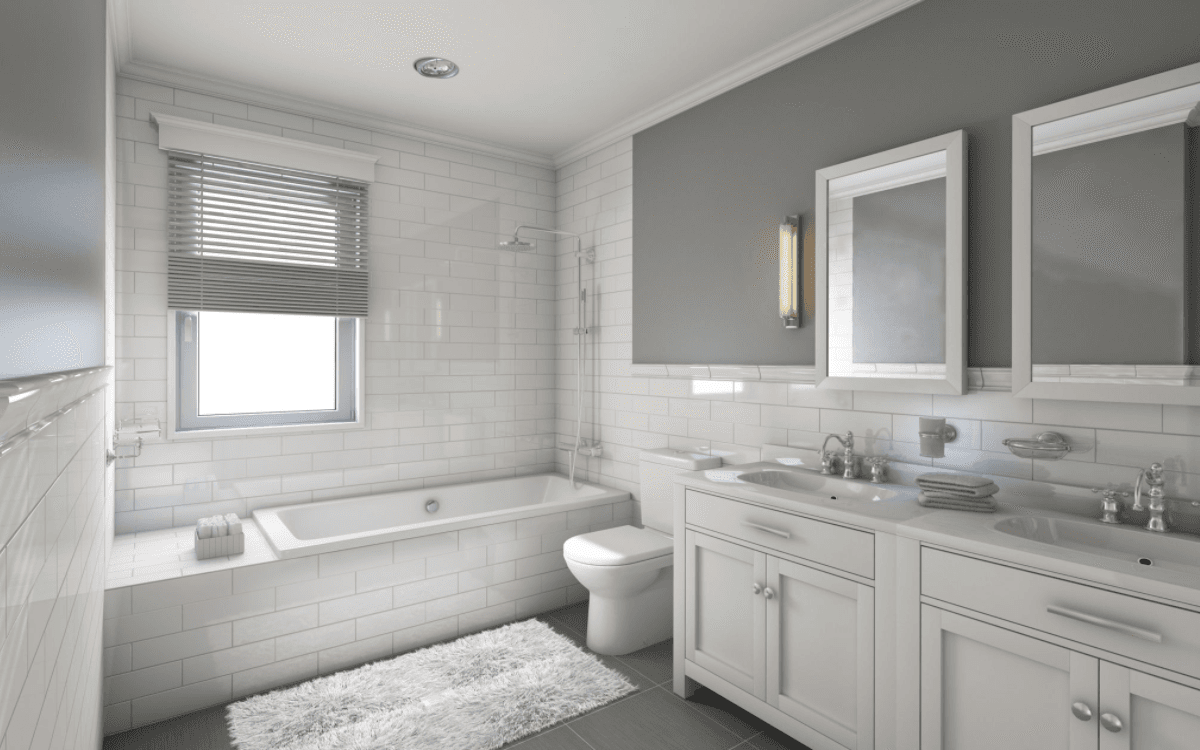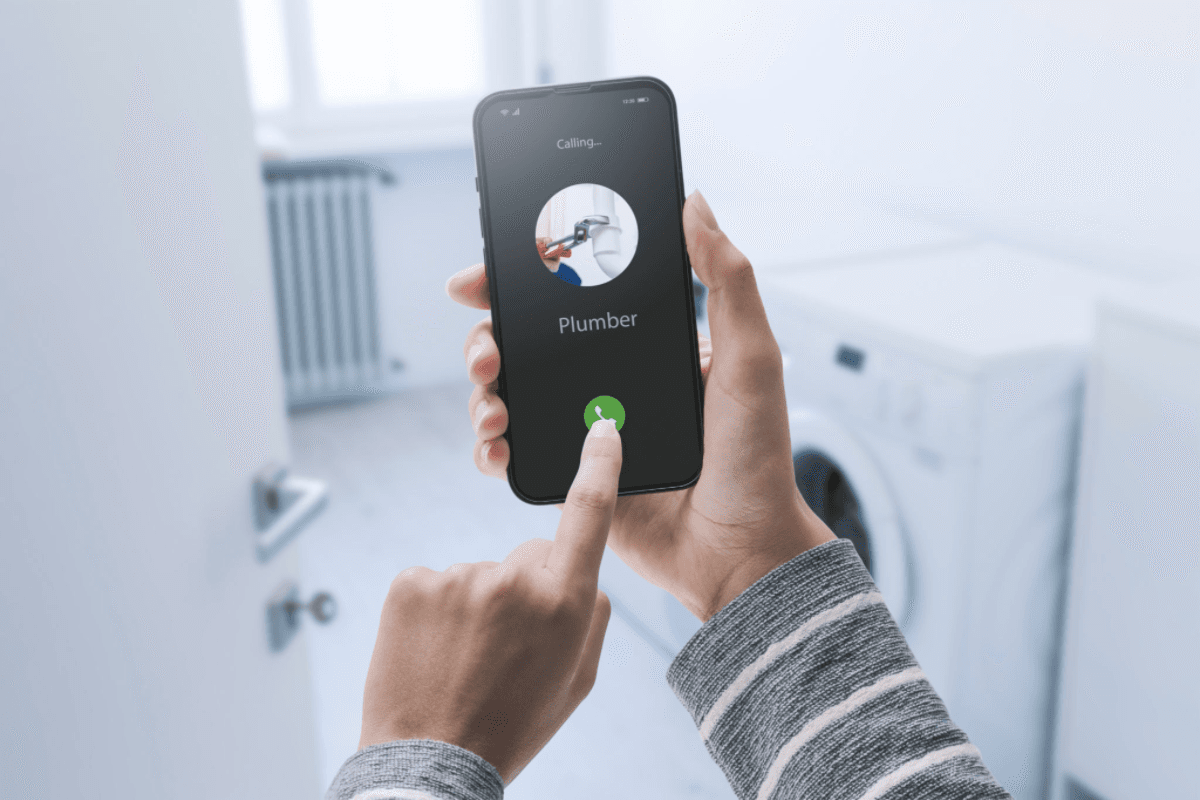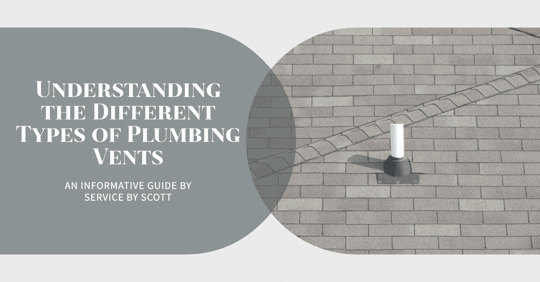Plumbing vents may not be the most visible part of your home’s plumbing system, but they play a crucial role in maintaining its functionality and comfort. Understanding the different types of plumbing vents and how they function can help you prevent common plumbing problems and ensure the smooth operation of your drainage system.
Service by Scott, a trusted family-owned and operated plumbing and maintenance company, with over 30 years of service in Woodville, Texas, welcomes you to this comprehensive guide. Whether you’re a homeowner or a business owner, understanding the intricacies of plumbing vents is essential. We’ll explore different types of plumbing vents, their functions, and why their proper maintenance is crucial for a smoothly running plumbing system.
As your dependable partner in plumbing, Service by Scott is here to provide valuable insights, answer your questions, and offer expert advice. Together, we’ll uncover the secrets of plumbing vents, empowering you to prevent common plumbing problems and ensuring a well-maintained plumbing system. Join us in this journey to understand plumbing vents and discover their importance for both residential and commercial plumbing.

Understanding the Basics
To comprehend the significance of plumbing vents, it’s essential to start with the fundamentals. What are plumbing vents, and why are they so vital to your plumbing system? These unobtrusive components are central to maintaining a healthy and efficient drainage system.
What Are Plumbing Vents?
Plumbing vents are an integral part of any plumbing system, and their primary purpose is to ensure proper drainage. They are essentially pipes or channels that extend from various plumbing fixtures and connect to the main vent stack, which, in turn, leads to the outside of the building. These vents allow air to enter the plumbing system, ensuring that wastewater flows smoothly and without interruption.
The Importance of Proper Ventilation
Proper ventilation is the backbone of an effective plumbing system. Without adequate ventilation, your plumbing system can suffer from numerous issues, including slow drainage, gurgling sounds, and even foul odors. When wastewater flows down the drain, it creates a vacuum effect that can slow the flow of water and lead to airlock problems. Plumbing vents prevent this by allowing air to enter the system, equalizing pressure, and ensuring efficient drainage.
How Plumbing Vents Promote Drainage
Imagine trying to pour liquid from a bottle without allowing air to enter. It flows unevenly, splashes, and is generally a messy affair. Plumbing vents prevent similar chaos in your drainage system. By allowing air to enter, they enable wastewater to flow smoothly and without interruption. This means that when you flush a toilet or run a sink, the water flows effortlessly down the drain, preventing backups and ensuring a clean and odor-free plumbing system.
Understanding these basic principles is essential for maintaining a healthy plumbing system. Now that we’ve explored the fundamentals, let’s dive deeper into the specific types of plumbing vents and their roles in the world of plumbing.
Types of Plumbing Vents
In the realm of plumbing, there’s no one-size-fits-all solution, and the same principle applies to plumbing vents. There are several types of plumbing vents, each serving a unique purpose in maintaining your drainage system’s health. Let’s explore these various venting solutions to gain a comprehensive understanding of how they function:
Vent Stack
The vent stack, often referred to as the main vent, is a central component in plumbing venting. It’s a vertical pipe that extends from the main drainage line through the roof of the building. The vent stack serves as the primary escape route for sewer gases and allows fresh air to enter the plumbing system. This essential component ensures the smooth flow of wastewater and prevents sewer gas from entering your home.
Vent Termination
Vent terminations, also known as vent terminals, are the vent openings you see on the roof of a building. They are the final point where plumbing vents exit the structure and release sewer gases into the atmosphere. Vent terminations are designed to keep pests and debris out while allowing air to flow freely. Proper installation and maintenance of these terminations are crucial to ensure the plumbing system’s efficient operation.
Loop Vent
Loop vents are a common sight in residential plumbing systems. They are typically found in kitchens and bathrooms, where several fixtures are connected to a single vent stack. A loop vent allows multiple fixtures to share a single vent stack, simplifying the plumbing layout and reducing installation costs. By preventing airlocks and promoting smooth drainage, loop vents play a vital role in your daily plumbing activities.
Island Vent
If you have a kitchen island or a similar setup that requires plumbing, you’ll likely encounter island vents. These vents are designed to serve fixtures located away from the main vent stack. Island vents ensure proper drainage for fixtures like sinks and dishwashers, which might not be in close proximity to the central vent stack. By providing a dedicated ventilation solution for these fixtures, island vents maintain efficient water flow.
Understanding the different types of plumbing vents is essential for both homeowners and plumbing professionals. Each type has a specific purpose, contributing to the overall functionality of your plumbing system. In the following sections, we’ll delve deeper into how these venting systems work in various plumbing fixtures, from bathrooms and kitchens to laundry rooms and more.

Venting Systems for Different Plumbing Fixtures
Plumbing vents are not one-size-fits-all solutions. Different fixtures in your home or commercial space require unique venting systems to ensure their optimal performance. Understanding these variations is essential for maintaining a smooth-running plumbing system. In this section, we will explore how venting systems are tailored to different plumbing fixtures, addressing the specific needs of each.
Bathroom Fixtures
Bathrooms are among the most frequently used areas in any home. They house several plumbing fixtures, including sinks, toilets, and bathtubs or showers. Each of these fixtures requires a specific venting system to maintain proper drainage.
- Toilets: Toilets typically have their own dedicated vents. A horizontal vent pipe connects to the main vent stack, ensuring that the toilet can flush effectively without causing airlock problems. This dedicated venting prevents gurgling and slow drainage when the toilet is in use.
- Sinks: Bathroom sinks often share a common vent with other fixtures in the bathroom. These fixtures might be interconnected through a loop vent, ensuring that air can enter the system and wastewater can flow efficiently.
- Bathtubs and Showers: Similar to sinks, bathtubs, and showers may share a common vent with other fixtures in the bathroom. Adequate venting ensures that water drains freely, preventing water backup in these fixtures.
Kitchen Fixtures
Kitchens are another hub of plumbing activity, with sinks and dishwashers as primary fixtures. Proper venting in the kitchen is crucial for smooth drainage, especially when handling grease and food debris.
- Sinks: Kitchen sinks usually have their own dedicated vent, ensuring that wastewater flows smoothly and that food particles don’t cause clogs. These vents connect to the main vent stack or a loop vent, allowing efficient drainage.
- Dishwashers: Dishwashers require an independent vent or a connection to the kitchen sink’s vent. This dedicated venting prevents wastewater from backing up and ensures efficient cleaning and drainage.
Washing Machines and Utility Sinks
Laundry areas and utility sinks serve as the epicenter for tackling dirty and heavy-duty cleaning tasks. The plumbing fixtures in these spaces must be equipped with suitable venting systems.
- Washing Machines: Washing machines often share a vent with the utility sink. Proper venting ensures that the washing machine’s large volume of water can be drained efficiently, avoiding overflows or blockages.
- Utility Sinks: Utility sinks, frequently used for tasks like cleaning gardening tools or washing pets, rely on a dedicated vent or connect to the main vent stack. Venting ensures wastewater from these sinks flows smoothly, even when handling debris.
Understanding the unique venting requirements for different plumbing fixtures is essential for preventing common issues like slow drainage, backups, and foul odors. These tailored venting systems ensure that water and waste flow seamlessly, making your daily activities in the bathroom, kitchen, and laundry areas convenient and trouble-free. In the following section, we’ll delve into common challenges that can arise in residential plumbing due to improper venting and how to identify and resolve these issues effectively.
Venting Challenges in Residential Plumbing
While plumbing vents play a critical role in maintaining an efficient drainage system, issues can arise when venting systems are compromised or improperly installed. It’s essential to recognize these challenges and address them promptly to ensure your plumbing system operates smoothly. In this section, we’ll explore common venting challenges that can impact residential plumbing.
Common Venting Issues
- Airlocks: When venting systems are not functioning correctly, airlocks can occur. An airlock is a trapped pocket of air in the plumbing system, which disrupts the flow of wastewater. This often leads to slow drainage, gurgling sounds, and even water backup in fixtures.
- Clogs and Blockages: Debris, leaves, or pests can obstruct vent terminations, preventing the free flow of air. Clogs or blockages in vent stacks can also disrupt ventilation, causing issues in your plumbing system.
- Improper Sloping: Vent pipes should slope upward as they extend away from fixtures to promote proper drainage. If there are dips or slopes in the wrong direction, water and waste can accumulate, leading to blockages and slow drainage.
- Cracks or Damage: Over time, vent pipes may develop cracks or damage due to age or external factors. These issues can allow sewer gases to escape into your home, leading to unpleasant odors and potential health hazards.
Identifying Venting Problems
Recognizing venting problems is crucial to maintaining your plumbing system’s health. Here are some signs that may indicate venting issues:
- Gurgling or Bubbling Sounds: If you hear gurgling or bubbling sounds when using plumbing fixtures, it’s a sign that air isn’t flowing properly through the venting system.
- Foul Odors: Sewer gas escaping into your home can lead to unpleasant odors. If you notice a persistent foul smell, it’s a clear indication of venting problems.
- Slow Drainage: When sinks or fixtures drain slowly, it may be due to a lack of proper venting. Slow drainage is a common result of venting issues.
- Water Backups: Frequent water backups in fixtures like toilets and sinks can be a clear sign of venting problems. Water should flow smoothly without backups.
Solving Venting Problems
If you suspect venting issues in your residential plumbing, it’s crucial to address them promptly. Here are steps to consider:
- Inspect Vent Terminations: Check for obstructions or damage at vent terminations on your roof. Ensure they are clear of debris and pests.
- Vent Cleaning: Consider professional vent cleaning to remove blockages and debris that may have accumulated in your venting system.
- Repair or Replace Vent Pipes: If you identify damaged or cracked vent pipes, it’s essential to repair or replace them to prevent sewer gas leaks and maintain proper venting.
- Consult a Professional: If you’re unsure about identifying or addressing venting issues, it’s wise to consult a plumbing professional. They can provide expert guidance and solutions to ensure your plumbing system operates efficiently.
By understanding and addressing these common venting challenges, you can ensure that your residential plumbing system functions smoothly and remains free from issues that can disrupt your daily life. Proper maintenance and prompt problem-solving are key to a well-operating plumbing system.
Commercial Plumbing Vents
When it comes to plumbing in commercial properties and businesses, the complexity and scale of the plumbing systems are often vastly different from residential setups. Commercial plumbing not only serves a higher volume of people but also has distinct considerations and regulations. In this section, we’ll explore the specific factors that come into play with commercial plumbing vents.
Special Considerations for Businesses
In a commercial setting, the plumbing system often serves a multitude of employees and customers. Therefore, it must be designed to handle a higher demand. This includes ensuring that the plumbing vents can accommodate the increased usage without issues like slow drainage or backups. The design and layout of the venting system must take into account the specific requirements of the business, including the types of fixtures used and their locations.
Sizing and Installation Requirements
The sizing and installation of plumbing vents in commercial properties are crucial aspects that require careful planning. Unlike residential plumbing, where a single vent stack may suffice, commercial properties often require multiple stacks to manage the extensive plumbing network. The sizing of these vents must align with the flow rates and demands of the fixtures they serve. Proper installation is essential to ensure that the vents operate efficiently and meet regulatory standards.
Compliance and Regulations
Compliance with local plumbing codes and regulations is paramount in commercial plumbing. Regulations can vary by location, but they generally aim to ensure the safety and efficiency of plumbing systems. Commercial properties are subject to specific codes that dictate the number and placement of vents, among other requirements. Failure to comply with these regulations can result in fines and, more importantly, a plumbing system that doesn’t function as it should.
Navigating the world of commercial plumbing vents requires an understanding of the specific needs and regulations that govern these systems. Businesses must work with experienced plumbing professionals who are well-versed in commercial plumbing to ensure their systems are designed, installed, and maintained correctly.
In the next section, we’ll shift our focus to the crucial topic of maintenance and care for plumbing vents. Proper maintenance is essential for preventing common issues and ensuring the longevity of your plumbing system, whether it’s residential or commercial.

Maintenance and Care
Proper maintenance and care are the cornerstones of a healthy plumbing system. Whether you’re a homeowner or a business owner, attending to your plumbing vents is essential to prevent issues and extend the lifespan of your plumbing infrastructure. This section will provide insights into the maintenance and care practices you should adopt, with a focus on the services offered by Service by Scott.
Signs of a Clogged or Blocked Vent
Recognizing the early signs of a clogged or blocked vent can save you from plumbing disasters. Look out for slow drainage, gurgling sounds, and unpleasant odors. If you notice any of these issues, it’s time to consider a thorough inspection and maintenance of your plumbing vents.
DIY Maintenance Tips
While some basic maintenance tasks can be handled by homeowners, it’s often wise to seek professional assistance to ensure the job is done correctly. Simple DIY maintenance can include checking vent terminations for debris and keeping them clear. However, for more complex maintenance and inspection, especially in a commercial setting, relying on experts like Service by Scott is the best way to guarantee the health of your plumbing system.
When to Call a Professional
Routine inspections and maintenance are essential for keeping your plumbing vents in top shape. Service by Scott, a family-owned and operated plumbing and maintenance company in Woodville, Texas, is your trusted partner in ensuring your plumbing vents are operating efficiently. With over 30 years of experience serving Tyler County and neighboring areas, Service by Scott offers a full range of services, from routine inspections to resolving complex venting issues.
Whether you’re a homeowner in need of residential plumbing vent maintenance or a business owner looking for professional solutions for your commercial plumbing system, Service by Scott is fully licensed and equipped to handle the job. They understand the intricacies of plumbing vent systems and have the expertise to maintain them at their best.
In conclusion, regular maintenance and care of your plumbing vents are essential to keep your plumbing system in peak condition. Don’t hesitate to reach out to experts like Service by Scott for a helping hand in ensuring the longevity and efficiency of your plumbing infrastructure. By doing so, you’ll avoid common venting issues and enjoy a reliable, odor-free, and smoothly-flowing plumbing system.
Advantages of Proper Venting
Proper venting is the unsung hero of your plumbing system, quietly working to maintain the integrity and efficiency of your drainage infrastructure. While it may not be the most glamorous aspect of plumbing, it plays a vital role in ensuring that your daily activities run smoothly, and your environment remains comfortable and odor-free. In this section, we’ll explore the numerous advantages of having a well-vented plumbing system.
Preventing Odors and Sewer Gas
One of the most immediate and obvious advantages of proper venting is the prevention of unpleasant sewer gas odors. When your plumbing system functions correctly, it allows for the release of sewer gases outside your property, ensuring that your indoor spaces remain fresh and comfortable. Without adequate venting, these noxious odors can seep into your home, leading to discomfort and health concerns.
Reducing Drainage Problems
A well-vented plumbing system promotes efficient drainage. When wastewater flows through pipes without obstruction, you’ll experience fewer instances of slow drainage, backups, and gurgling sounds. Proper venting prevents airlock issues that can disrupt the flow of water and result in clogs, making your daily activities more convenient and less frustrating.
Extending Plumbing System Lifespan
Proper venting not only ensures the smooth operation of your plumbing but also contributes to the longevity of your entire plumbing system. When drains are free from constant clogs and backups, pipes, and fixtures remain under less stress. This means that your plumbing system is less prone to wear and tear, leading to fewer repairs and an extended lifespan for your plumbing infrastructure.
In essence, the advantages of proper venting are far-reaching, affecting the comfort, functionality, and longevity of your plumbing system. By prioritizing proper venting, you ensure that your plumbing works efficiently, that unpleasant odors are kept at bay, and that your plumbing system enjoys a longer and healthier lifespan. For homeowners and business owners alike, investing in quality venting solutions is an essential step in maintaining a well-functioning plumbing system.
Conclusion
In the world of plumbing, where fixtures, pipes, and drains often take the spotlight, plumbing vents play an equally critical, though often overlooked, role. These unassuming components ensure the efficient flow of wastewater and the expulsion of sewer gases, allowing your plumbing system to run smoothly and odor-free. We’ve journeyed through the intricate network of plumbing vents, discovering their various types, the specific requirements of different plumbing fixtures, and the common challenges and solutions found in both residential and commercial plumbing systems.
The advantages of proper venting are profound, as it safeguards your indoor air quality, reduces drainage issues, and extends the life of your plumbing system. Whether you’re a homeowner seeking to maintain the tranquility of your residence or a business owner striving for an efficient, hassle-free workspace, investing in quality venting solutions is a decision that will bear fruit for years to come.
At Service by Scott, we understand the complexities of plumbing vent systems, and we’re here to offer our expertise. As a family-owned and operated full-service plumbing and maintenance company with over 30 years of dedicated service to Tyler County and its neighbors, we have the experience, knowledge, and skills to handle your plumbing needs. From routine inspections to resolving complex venting challenges, we’re fully licensed and equipped to ensure that your plumbing system operates at its best.
Your plumbing system is more than just a network of pipes; it’s an essential part of your daily life. Whether it’s the comfort of your home or the smooth operation of your business, maintaining a well-vented plumbing system is a commitment to convenience and well-being. Contact Service by Scott today, and let us be your trusted partner in ensuring that your plumbing system functions at its best. Together, we can uphold the integrity of your plumbing, making your space odor-free and your daily life more comfortable.
FAQs
What is the primary purpose of a plumbing vent?
The primary purpose of a plumbing vent is to ensure efficient drainage by allowing air to enter the plumbing system. This prevents airlock issues, slow drainage, and the release of unpleasant sewer gas odors into your home or business.
How often should I inspect my plumbing vents?
Regular inspections are essential to ensure the proper functioning of your plumbing vents. For homeowners, an annual inspection is generally recommended. However, for businesses and commercial properties, more frequent inspections may be necessary due to higher usage.
Can I install additional vents to improve drainage?
Yes, in some cases, installing additional vents can improve drainage, especially if you’re experiencing issues like slow drainage or backups. However, it’s crucial to consult a professional plumber to assess your specific needs and ensure that the installation complies with local regulations.
What problems can arise from improper venting?
Improper venting can lead to various problems, including slow drainage, airlock issues, gurgling sounds from drains, clogs, and the release of foul sewer gas odors into your home or business. These issues can disrupt daily activities and pose health concerns.
Are there specific regulations for plumbing vents in commercial properties?
Yes, commercial properties are subject to specific local plumbing codes and regulations. These regulations dictate the number and placement of vents, sizing requirements, and other considerations to ensure the safety and efficiency of plumbing systems. Businesses need to comply with these regulations to avoid fines and maintain a properly functioning plumbing system.

